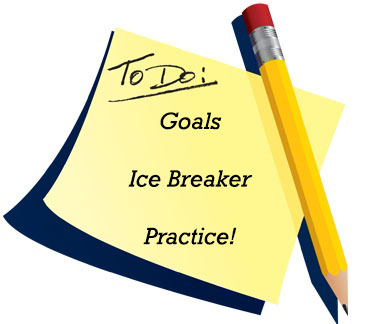Note: Below you’ll find Brandon Strathmann’s description of his experience working with eLIS to develop his first online class.
First let me commend all of you who contribute to this blog for the excellent variety and quality of content posted on it. It’s a great reflection of the dynamic and growing world of online teaching. I’m glad to have been introduced to such a useful resource.
I’d like to share my positive experience building an online class with all of you. I’m an Associate Professor of Animation and Motion Media Art at LUCAD (Lesley University College of Art and Design) who learned about the opportunity to design an online class at a Faculty Development Day event last Fall of 2012. I spent the past few months building an all-new “Advanced Character Design” class. It is designed to provide artists the chance to improve their skills of perception and rendering of caricatured humans and animals. I delve into the psychology of how humans are manipulated by the things they see. Artists learn to play around with the physical traits that viewers make conscious and unconscious judgments of when they look at a character. They end the class with a portfolio of the art they have done.
I entered this online academic realm with some practical computer and programming skills, hoping to expand the sort of content I could offer to students. I have seen technology innovate and improve the field of animation and video games during my own career, and learned that it’s always good to be one of the earlier practitioners of a trade to adopt advancing technology. Technology isn’t so much of an inevitability as it is an opportunity.
The training process for this class took two stages, that eased me into the unique methodology required in designing an online class. Part one was an online group class where participants learned how to modify existing classes to work in an internet-connected environment. This stage was challenging for me since I was designing a new class that had to be an advanced part two to an existing class that also needed to exist as a stand-alone graduate class. I was introduced to the various online tools to instill knowledge and skills in my students through four weeks of challenges and exercises done independently and in groups. The class ends with a complex final project testing the skill accumulation along with the creativity of the student.
The second part of this training was getting to work one-on-one with a Senior Learning Technologies Designer to build the written framework for this class. My course needed a customized format to provide a rich environment for students to learn in online. There was some trial and error in designing this since I was becoming better at understanding how the online teaching tools worked. I had to write a few drafts of my weekly course modules, honing in on how I might best communicate with online students as part of this learning process. It took me a while to learn what tool would be best for addressing various lesson plans but luckily my trainer was very patient and helpful.
I think it helps to be an experienced teacher when you design one of these non-traditional online courses. You need to really understand the specific challenges that your students face based off of your personal mastery of their educational medium. Art courses rely upon a lot of creative energy in a student’s learning environment to keep them interested and passionate about the material. I felt very challenged having to come up with an advanced class in character design as an online class. When I first embarked on this creative journey I felt that this would just be a correspondence course, something where I would provide instructional videos and provide written critiques about the work my students turned in.
Most of what a character designer does is hands-on and experiential in nature, these artistic factors are complicated visual elements that were challenging to translate into a written format. I designed symbolic language that my students could use as a guide to envision and review the topics covered in the lessons. Taking lessons that are primarily hands on and instead building them as systematic, written steps required me to predict how students would experience each portion of the designing process.
Early in the process I saw that I would need to plan out my lessons from the start to the finish for each of these class sessions, and that these lessons would have to planned out in a written form. Writing provided me with powerful tools to summarize my lessons. I’ve learned that I form ideas and describe them differently when I use the written as opposed to the spoken word. I enjoy getting feedback from my pupils and had to envision how students working in my class would react and feel about the lessons they are taking in class. So my pedagogical approach had to be modified to one where I was entirely reliant upon my existing understanding of student behavior in the classroom. This required me to research online content delivery methods and the educational philosophies of many other teachers to see what educational techniques I might use.
Click here for Part 2 of Brandon’s story…
Note: Image orignally published on aquariumofthepacific.org



